
OPPO’s latest selfie-centric phone is one of its biggest handsets yet. It’s got a large display and powerful specs but the main attraction is its dual front-facing camera.
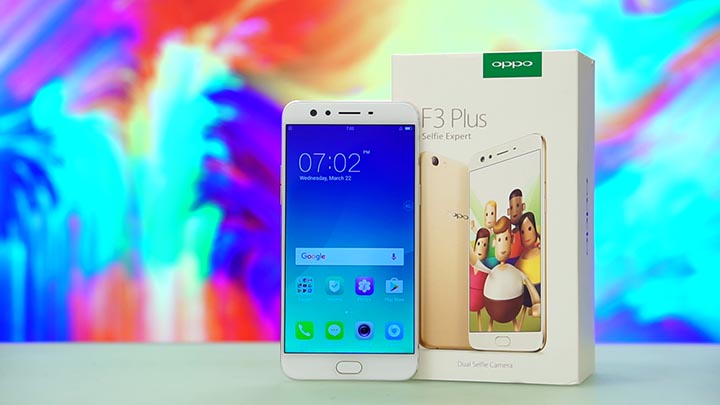
As a likely successor to the F1 Plus, OPPO jumps onto the dual camera wagon with two front shooters combining a narrow and a wide FOV. Here’s our review of the OPPO F3 Plus.
Table of Contents
Design-wise, the F3 Plus resembles its flagship offering, the R9s, which then resembles the former iPhone 6/6s design. The front is mostly occupied by the display with a good amount bezel around, just the like iPhone. Positioned on top of the display are the earpiece, front sensors, and the two front cameras. The one on the left has a wide-angle lens while the right has a narrower field-of-view. Below the display is the capacitive buttons with the fingerprint scanner positioned in the middle.

The left-hand side of the phone houses the power/lock button and the hybrid card tray that accepts two Nano-SIM cards with the second slot also open for a microSD card.
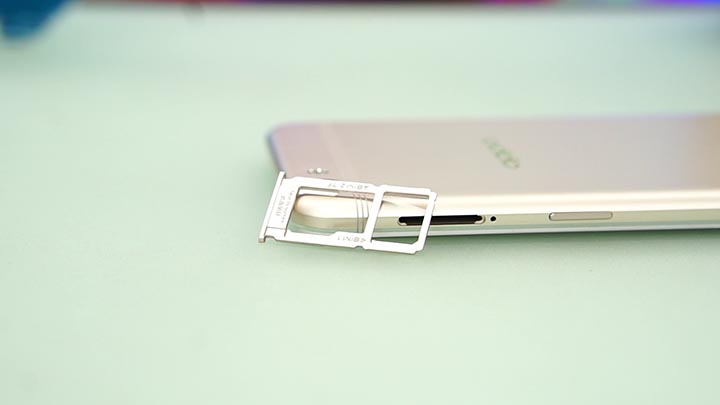
The right side solely has the volume rocker and nothing else. The phone has an aluminum unibody with rounded corners making it easy to hold on hand. This is a great ergonomic design since the phone is really large to begin with.
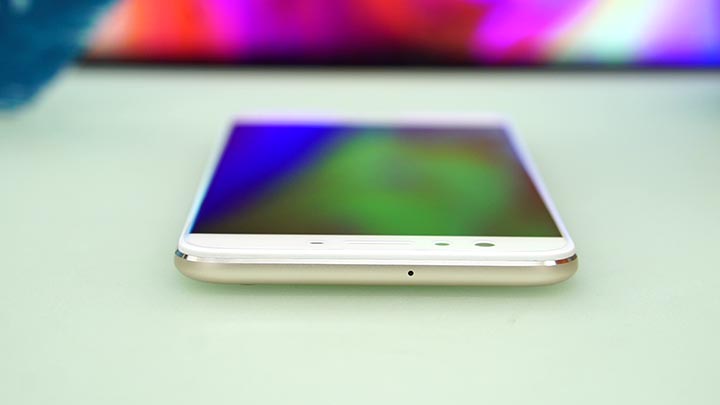
The top side is voided of any ports and buttons leaving the bottom end with the 3.5mm headphone port, micro-USB port, and the loudspeaker. It would have been nice to have USB-C in 2017, though.
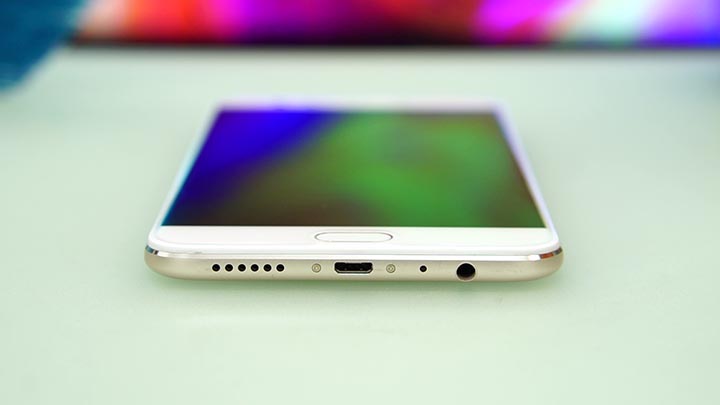
The back of the handset is clean and simple. The rear camera is at the top-left corner with a dual-tone LED flash on its side. The camera module protrudes out of the phone’s chassis, again, just like the iPhone 6.
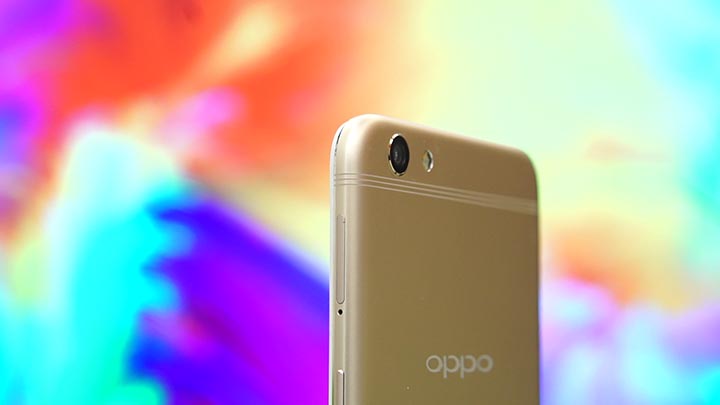
What different here though is the plastic antenna bands. Instead of a solid strip, OPPO made it sleeker with three thin lines on each end. This keeps the visibility of the lines minimal to the naked eye. We already saw this implementation with the Samsung Galaxy C9 Pro we reviewed and it’s a design we appreciate.
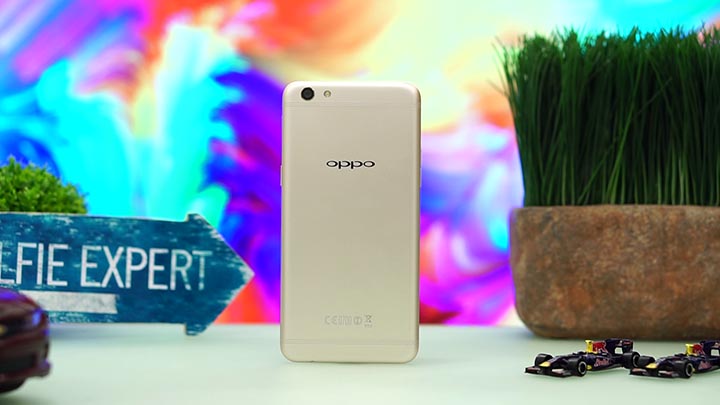
To sum up what the OPPO F3 Plus looks and feels like, you just need to hold an iPhone 6/6s. This will not award OPPO any originality award but some users who prefer Apple’s former iPhone design will be glad about this.
The device has a rather large 6-inch display and uses an IPS LCD panel with a Full HD resolution or a pixel density of 367ppi. It’s not the sharpest around due to its size but it’s more than enough for everyday use. The display is saturated, even too saturated for our liking that we initially thought of it as an AMOLED panel.
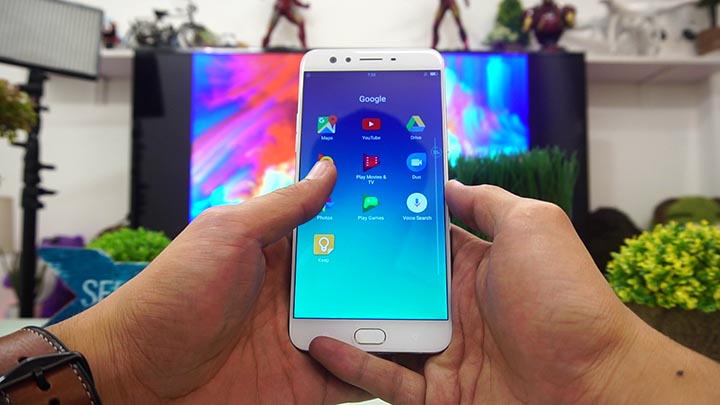
The screen is protected with Corning Gorilla Glass 5 for scratch resistance and added durability.
The loudspeaker that fires down from the phone is surprisingly loud and has a good depth when playing videos and games on the phone.
The phone runs OPPO’s custom interface called Color OS 3.0 which is based on Android 6.0 Marshmallow. Lower tier OPPO phone has the same OS but based on a dated Android 5.1 Lollipop. Marshmallow is not the latest flavor around but you can hardly identify due to the customizations.

Like with the phone’s physical design, OPPO’s takes a lot of cues from Apple. If you’ve owned or even held an OPPO phone, you can clearly tell the UI is an iOS rip-off. While we appreciate the deep customization, we expected to see more of Color OS on higher end devices. Users of lower midrange phones from OPPO, like the F1s and A39, won’t miss much here.
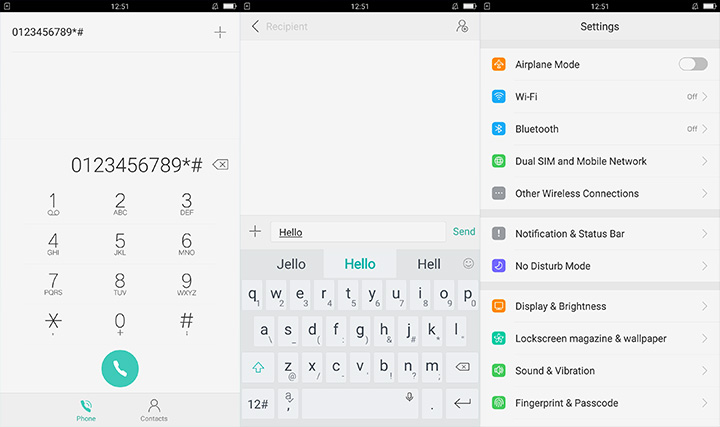
Out of the box, you can easily jump start a complete Android experience with Google apps already pre-installed. A few system apps and tools plus Facebook are also present which is always handy to have. The handset has 64GB internal storage in which 52.27GB is accessible to the user. Our initial boot gave us 51.35GB of free space.
The shooters on OPPO phones have been one of the manufacturers main strengths. Also, their camera launcher is fairly easy and familiar thanks again to Color OS’ inspiration from Apple.
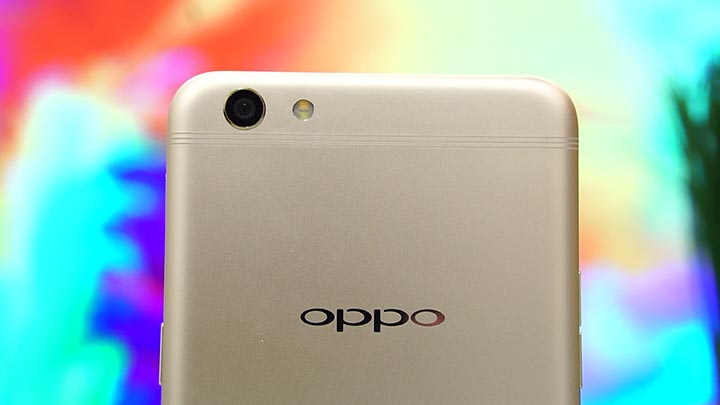
This time around though, OPPO jumps onto the dual camera wagon with two selfie cameras – one normal and one wide-angle. It’s mainly marketed for taking your own selfie and then taking a group selfie. The main selfie camera has a 16MP sensor with a bright and crisp f/2.0 aperture while the wide-angle is a lower 8MP shooter. The selfies taken with the main front shooter is superb. It’s clear and a fair looking bokeh thanks to its large lens opening. The wide-angle, on the other hand, still produces quality shots with extremely wide FOV akin to an action camera. Here are the samples:
While the front camera gets a dual setup, the rear camera receives a technical upgrade. It still has a 16MP sensor but with an f/1.7 aperture and dual PDAF. It focuses quickly in daylight and captures sharp and pleasing stills. The color accuracy of photos are also on point and is definitely a good rear shooter. Check out the samples below:
As for videos, the F3 Plus get 4K recording. Too bad though there’s no optical image stabilization present which further improve video stability. Check out the sample clip below:
Powering the latest OPPO phone is Qualcomm’s latest midrange chipset, the MSM8976 Pro or also known as the Snapdragon 653. It’s got a total of eight cores running at a max clock speed of 1.9GHz. Graphics is then handled by the Adreno 510 GPU and there’s also an ample 4GB of LPDDR4 RAM for memory. Quite an upper midrange setup honestly and it shows with our usage.

The phone breezes through the interface and switches from one app to another smoothly. 4GB RAM is quite a lot of memory to fill in. Thankfully, Color OS doesn’t hinder performance and doesn’t eat up a lot of memory, unlike other heavy Android launchers.
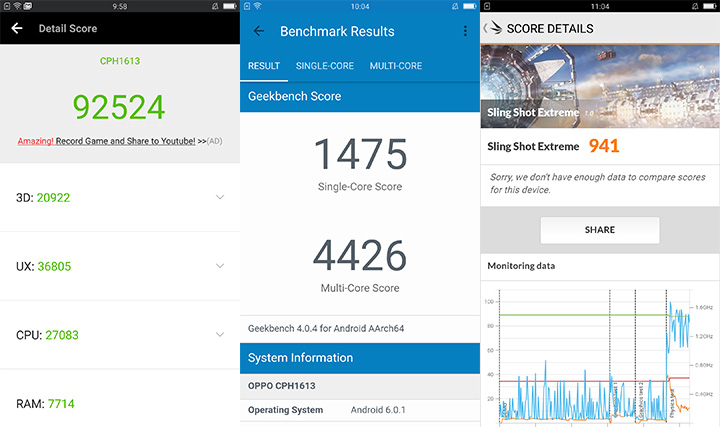
Gaming is something you could enjoy with the F3 Plus, especially with its large display. We were able to run quality titles in high graphic settings easily. An intensive title like NBA 2K17 is also playable in highest settings possible.
Here are the benchmark scores:
Call quality on the phone is great and so far, with our brief usage, we didn’t experience any issues.
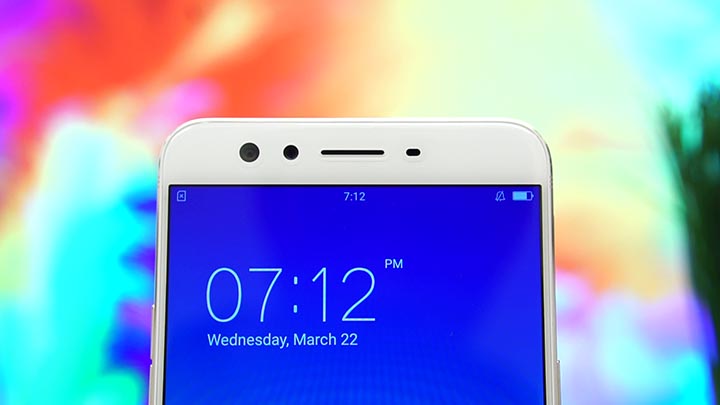
The phone supports a number of 4G LTE bands which takes advantage of the available frequencies in the country from both Globe and Smart. Other connectivity options include dual-band Wi-Fi, Bluetooth 4.1, GPS and other location services.
With a 4,000mAh battery sealed inside, the OPPO F3 Plus can surely last longer than average. It also has fast-charging support with OPPO’s own VOOC technology. It charges from 0% to 47% in just 30 minutes using the bundled fast charger.
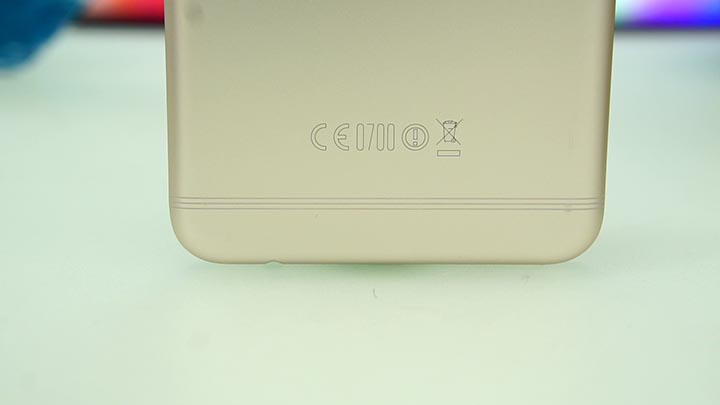
Using our standard video loop test, the F3 Plus managed to get 13 hours and 39 minutes of continuous playback at 50% brightness and in airplane mode. As for PCMark Work 1.0 battery test, it was able to last for 12 hours and 21 minutes.
For the most part, OPPO F3 Plus is a commendable Android phone or say a phablet thanks to its 6-inch display. It definitely packs power and juice but what makes us think twice about it is the Color OS.
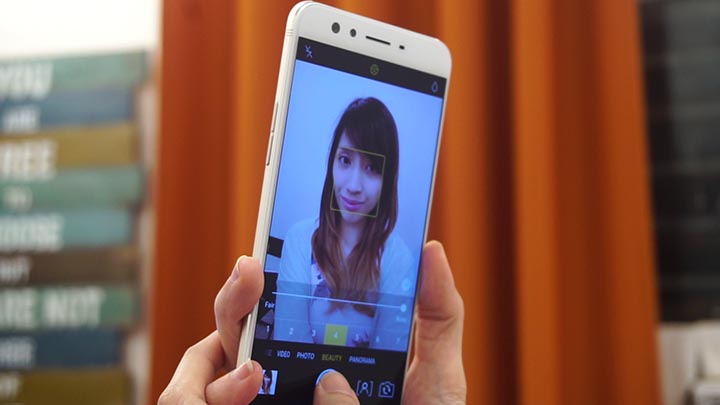
Sure, it benefits OPPO’s lower offering but for something positioned higher, we’d like to see something new, something updated with the Android ecosystem. If OPPO can just push version updates, it would be great. The OPPO F3 Plus retails in the Philippines for Php23,990USD 409INR 34,656EUR 389CNY 2,977 which is far from the current pricing of OPPO phones but this one is a premium.
OPPO F3 Plus specs:
6-inch Full HD IPS LCD display @ 1920 x 1080 pixels
Corning Gorilla Glass 5
Qualcomm Snapdragon 653 1.9GHz octa-core processor (MSM8976 Pro)
Adreno 510 Graphics
4GB LPDDR4 RAM
64GB internal storage
expandable via microSD up to 256GB (uses SIM2 slot)
16MP f/2.0 normal + 8MP 120-degree wide-angle front cameras
16MP f/1.7 rear AF camera with Dual-tone LED Flash, Dual PDAF, 4K video support
4G LTE
Dual SIM (nano, hybrid)
Dual-band WiFi 802.11 a/b/g/n/ac
Bluetooth 4.1
GPS w/ aGPS
Gyroscope
OPPO ColorOS 3.0 (Android 6.0 Marshmallow)
4,000mAh Li-Ion battery (non-removable) with VOOC fast charging
163.63 x 80.8 x 7.35mm (dimensions)
185g (weight)
Pros:
Cons:

YugaTech.com is the largest and longest-running technology site in the Philippines. Originally established in October 2002, the site was transformed into a full-fledged technology platform in 2005.
How to transfer, withdraw money from PayPal to GCash
Prices of Starlink satellite in the Philippines
Install Google GBox to Huawei smartphones
Pag-IBIG MP2 online application
How to check PhilHealth contributions online
How to find your SIM card serial number
Globe, PLDT, Converge, Sky: Unli fiber internet plans compared
10 biggest games in the Google Play Store
LTO periodic medical exam for 10-year licenses
Netflix codes to unlock hidden TV shows, movies
Apple, Asus, Cherry Mobile, Huawei, LG, Nokia, Oppo, Samsung, Sony, Vivo, Xiaomi, Lenovo, Infinix Mobile, Pocophone, Honor, iPhone, OnePlus, Tecno, Realme, HTC, Gionee, Kata, IQ00, Redmi, Razer, CloudFone, Motorola, Panasonic, TCL, Wiko
Best Android smartphones between PHP 20,000 - 25,000
Smartphones under PHP 10,000 in the Philippines
Smartphones under PHP 12K Philippines
Best smartphones for kids under PHP 7,000
Smartphones under PHP 15,000 in the Philippines
Best Android smartphones between PHP 15,000 - 20,000
Smartphones under PHP 20,000 in the Philippines
Most affordable 5G phones in the Philippines under PHP 20K
5G smartphones in the Philippines under PHP 16K
Smartphone pricelist Philippines 2024
Smartphone pricelist Philippines 2023
Smartphone pricelist Philippines 2022
Smartphone pricelist Philippines 2021
Smartphone pricelist Philippines 2020
Pol says:
Thanks for the review. Support ba latest 700mhz lte frequency ng globe?
Daniel Morial says:
Yup.
Easy E says:
At this price, may iPhoneSE at may OnePlus3T.
dummy_001 says:
Yup, at easy to use in one hand pa.
haru says:
this would be like 28K range
OverPricedPhoneOverrated says:
OPPO iPhone F3 Plus. Higher price-to-spec ratio as always. Seriously, bakit di pa ginawang Nougat. Baka mamaya matengga lang ulit yan sa Marshmallow tulad nung mamahalin nilang phone na nastuck din sa Lollipop.
dickenson says:
f3 when it will be available??????…. updated OS and reasonable price pls…..thanks oppo…
Dlanyer says:
i will get oneplus 3T for that price
Kristine D says:
Which is better Oppo F3 Plus or Asus Zenfone 3 Zoom?
Amiko says:
Bakit sakin ung batt di aabot ng 4hrs straight use. Dahil ba un sa naka4G data ako. Pero kahit na watch ako movies full brightness in 30 mins 20% na bawas. Normal ba un haaaay brand new ganito…
niharika says:
Good Article. My vote is 4 Doogee Mix because of Super Small design Looks very Beautiful And Doogee Mix Price is Much better than Xiaomi Mix Also 4Gb And a 6Gb ram version Available . so better I buy Doogee Mix I am Super Excited to buy it.
Lyka says:
Nakakafrustrate kasi i cant enjoy my third party messaging app..like go sms..
Everytime I set it as default sms app, once u receive a sms the system will automatically set it back sa system messaging app..You dont have an option to decline un changes..Ing ibang normal symbols like un percent, hindi available.
jeesss says:
im experiencing the same thing nkakainis tlga
jay says:
i have no idea how to restore the original theme or just remove the current theme.hayyy. im startinh to regret purchasing this.
Mary rose says:
I’m satisfied with its performance. No regrets buying one.
Mary rose says:
I’m satisfied with its performance. No regrets buying one.
Dhen says:
Hi just want to ask.. Theres no review if the F3 is a waterproof or water resistant or not. Or maybe ndi ko lang nabasa. Just want to know. Thanks and more power
Carl Lamiel says:
No water resistance mentioned in their spec sheet.
Abe Olandres says:
It’s not.
Aluin says:
It does not support the video call while using other app? The video was turned off automatically and switched to audio (voice).
rj delrosario says:
which is better f3plus or huawei nova 2i
ice says:
can you post a comparison between oppo f5 and f3 plus? Also, which has a better camera quality? i like the pictures captured from F5 but what i would like to know if the F3 plus picture’s color quality is actually the same with F5.
Momzy says:
I really like Oppo F3 Plus. My husband purchased me one through Home Credit since it’s quite expensive. I don’t have to keep on uninstalling apps just like my old phone before. Now, I enjoy installing lots of informative apps and unlimited capturing of memories through it’s beautiful camera. This was truly a dream come true for me. It’s very convenient for those who love to travel. Very fast charging…before one hour,battery full na po…Thank you Oppo F3 plus…
tae says:
OPPO = OverPriced PO Lol.